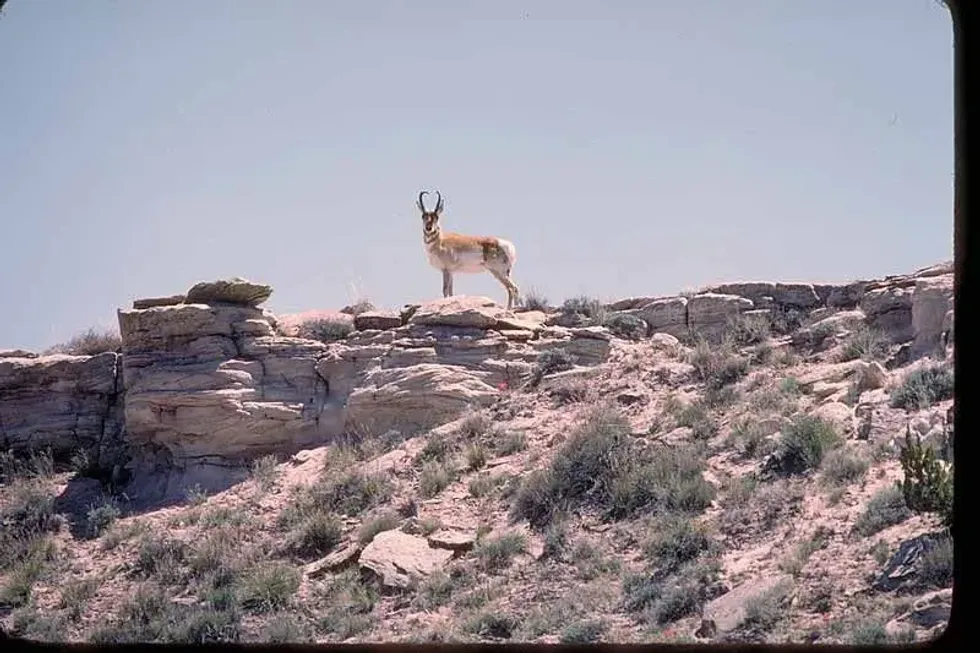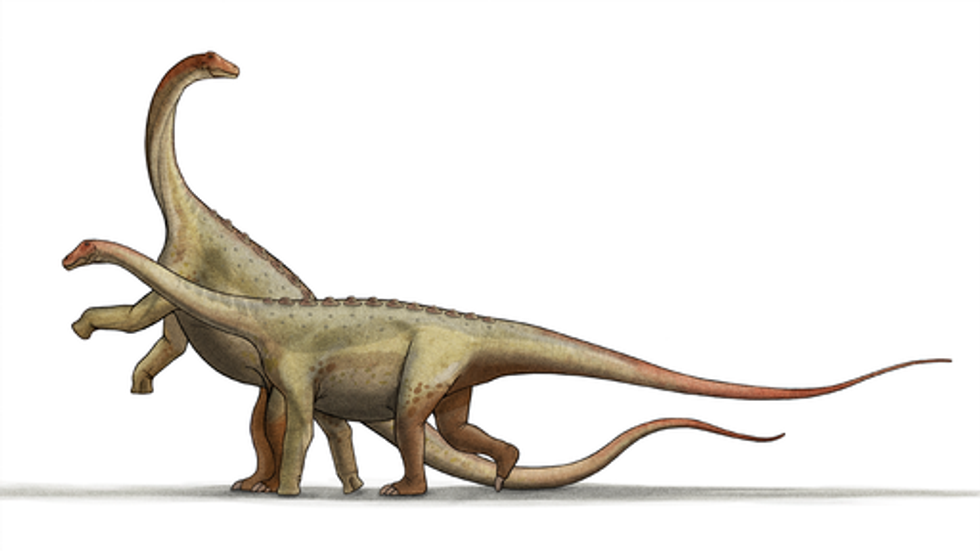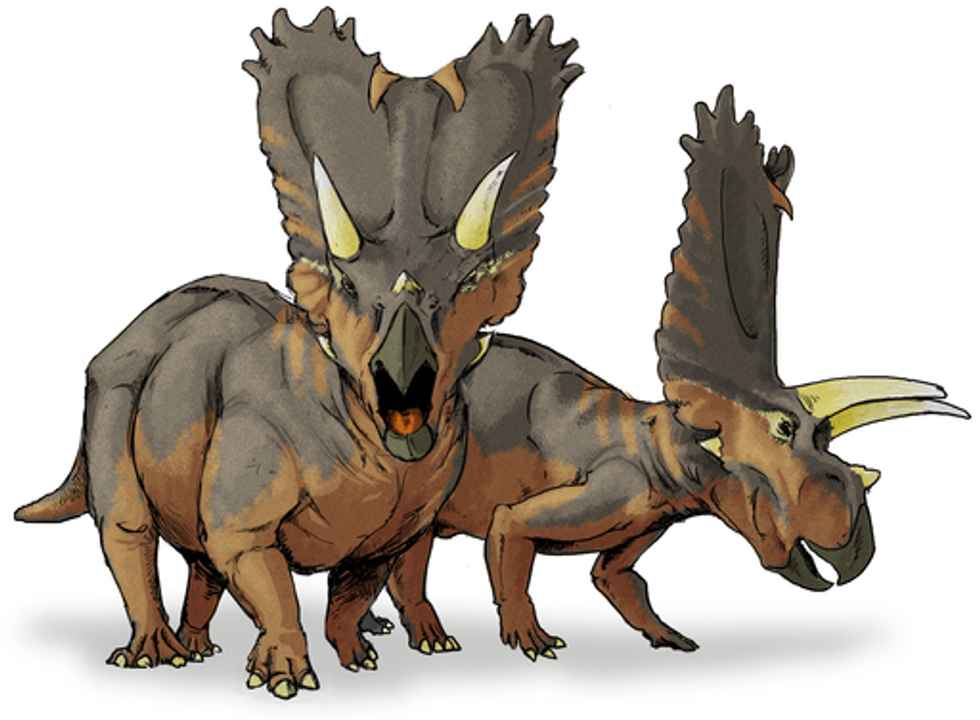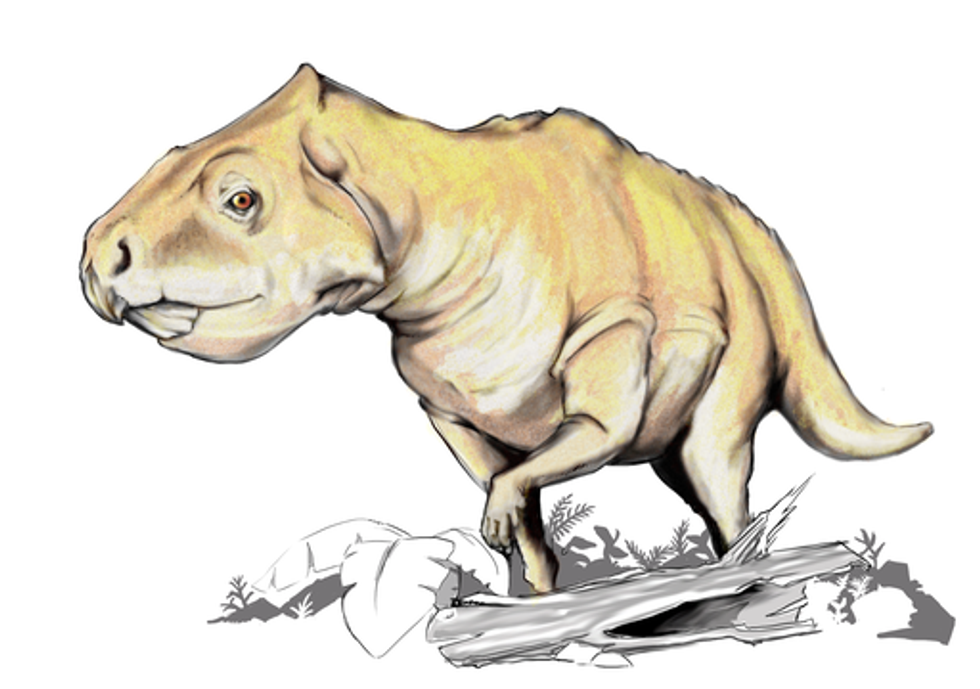The Sonoran pronghorn (Antilocapra americana sonoriensis) is a pronghorn antelope desert subspecies that is found only in the Sonoran Desert and is protected under the Endangered Species Act.
The Sonoran pronghorn is a biologically and genetically different subspecies of the pronghorn that is small and much lighter in color and has evolved to survive in desert environments. Males may weigh up to 130 lb (59 kg) on average, while females weigh 110 lb (50 kg) on average.
With a shoulder height of around 3 ft (0.9 m), these pronghorn antelopes are somewhat smaller than a white-tailed deer.
Both males and females of this species have horns, but the females' are shorter and resemble a hump. Males are black in color and measure between 10-12 in (25.4-30.5 cm) in length. Their horns stretch up and down, with a short time (prong) pointing upward. The species' name, 'pronghorn', is derived from the distinctive shape of their horns.
Sonoran pronghorns have high-set eyes that can sense movement from many miles away. They're well-known for their painfully shy nature and for being easily scared. Their foresight and speed, as well as their wariness, are critical to their survival.
They are well suited to desert environments as well, with the ability to lift patches of very stiff hair to unleash heat in intense heat. Over the winter, their hollow hairs act as insulation too. These Sonoran pronghorn antelope adaptations allow them to survive in extreme temperatures throughout the year.
If you like reading these facts, you can also check out our articles on the guanaco and the black rhinoceros too.
Sonoran Pronghorn Interesting Facts
What type of animal is a Sonoran pronghorn?
The Sonoran pronghorn is an endangered species of antelope. It is a genetically distinct subspecies of the pronghorn.
What class of animal does a Sonoran pronghorn belong to?
The Sonoran pronghorn antelope belongs to the Mammalia class of animals.
How many Sonoran pronghorns are there in the world?
In the United States, about 160 Sonoran pronghorn remain, while 240 are under protection in Mexico.
Where does a Sonoran pronghorn live?
Sonoran pronghorns live in the desert.
What is a Sonoran pronghorn's habitat?
The typical Sonoran pronghorn habitat can be described as deep, alluvial valleys separated by granite mountains and mesas, where they can observe their surroundings within their range. Owing to insufficient rainfall and lack of water, much of the Sonoran pronghorn's range is now devoid of vegetation.
It is presently limited to four small populations all in North America: two in southwestern Arizona, the United States, and two in Mexico, both of which are found within the El Pinacate y Gran Desierto de Altar Biosphere Reserve.
Who do Sonoran pronghorns live with?
They usually live independently except for during the mating season, where they spend time with their mates.
How long does a Sonoran pronghorn live?
The lifespan of a Sonoran pronghorn is between 10 and 12 years.
How do they reproduce?
Female Sonoran pronghorns can first breed when they are 16 months old, and pronghorn bucks can breed at one year. Do you know what their gestation period is?
They have a gestation period of 245 days.
Pronghorns sometimes have a set of twins, but most only give birth to one tiny fawn which weighs from 5-7 lb (2.3-3.2 kg) at birth. Whilst these cute fawns are still small, they stay concealed while the doe is out foraging and fawns come out to eat when she returns.
Since fawns don't radiate a scent, predators have a difficult time locating them.
Though they generally stand within a day of birth, they will lay motionless for the remainder of the day, patiently waiting for their mum to return to feed her offspring, which usually happens two times a day. A juvenile pronghorn is free from its mother at the age of six months.
What is their conservation status?
Their conservation status is Endangered. Sonoran pronghorns are protected under the Endangered Species Act.
Sonoran Pronghorn Fun Facts
What do Sonoran pronghorns look like?
Both sexes of Sonoran pronghorns have white stripes across the frontside of their neck with a black mane that bands across down to the back of their necks. Their upper body is light brown, while their underbelly and rump are dark.
Males possess a black mask and cheek patches. When they are afraid, their very long white fur on their hindquarters sticks up.
This can be identified from afar and these bold markings in white act as a visual identifier and help them find one another over long distances in their wide range. It may also be used as a warning to other pronghorns that a threat is approaching.

*Please note that this is an image of a pronghorn, not a Sonoran pronghorn specifically. If you have an image of a Sonoran pronghorn please let us know at hello@kidadl.com.
How cute are they?
They are very cute, especially due to their brown and white color contrast. Their horns are majestic too!
How do they communicate?
They use different scents and their sense of smell to identify their territory and warn others of danger. Bucks have nine scent glands and, during the breeding season, the glands under their ears assist in the marking of territories.
When a risk is imminent, their rump glands are critical. When a Sonoran pronghorn sees a predator, these glands emit a warning odor, and the white fur on its rump stands up too. This sends a visual and olfactory warning to other pronghorns, alerting them so they can avoid predators.
How big is a Sonoran pronghorn?
A Sonoran pronghorn can be about 36 in (96 cm) tall and weigh about 75-130 lb (35-58 kg).
How fast can a Sonoran pronghorn move?
At a short-distance, pronghorns can achieve speeds of up to 60 mph (95.5 kmph), while over longer-distances, a Sonoran pronghorn antelope can sustain a speed of 35 mhp (56 kmph). This is just slower than the cheetah, the world's fastest ground animal. The Sonoran pronghorn, interestingly, can sustain high speeds for much longer than the cheetah can.
How much does a Sonoran pronghorn weigh?
Their weight is about 75-130 lb (35-58kg).
What are their male and female names of the species?
A female pronghorn is referred to as a 'doe' while a male is referred to as a 'buck'.
What would you call a baby Sonoran pronghorn?
Young pronghorns are known as 'fawns'.
What do they eat?
The digestive structure of the Sonoran pronghorn is similar to that of cows. They have a four-part stomach that lets them eat the succulent desert plants that make up the bulk of their diet (due to their primary habitat being the desert).
Vegetation that can be grown in the desert, flowering trees, cacti, and grasses are among their preferred foods.
Are they dangerous?
Sonoran pronghorns can be very dangerous if you try to get close. Hunters say that it is very difficult to get close to one, and they are very vigilant. These animals get scared and startled very quickly, so it's vital to always maintain a safe distance.
Would they make a good pet?
Sonoran pronghorns are not a suitable pet.
Did you know...
Some facts about the Sonoran pronghorn antelope are fascinating. For example, did you know that if it gets enough nutrition, a doe might give birth to twins, which is two times the cuteness?
They are slightly slower than cheetahs but can maintain their top speeds for a more extended period than the famous cheetah can!
Why is the Sonoran pronghorn endangered?
In the United States, about 160 Sonoran pronghorn remain, while 240 are under protection in Mexico. In 2012, announcements of two reintroductions were published in the Federal Register.
One of the reintroductions was to take place at the Barry M. Goldwater Range (BMGR) in Yuma, Arizona, and the second was to be at Kofa National Wildlife Refuge, Arizona. This responsibility for these reintroductions was taken by the Fish And Wildlife Service Department Of The U.S.A.
Sonoran pronghorn antelopes are threatened by bridges, fences, canals, remote housing construction, water supply development or depletion of water, contamination of water supply, competition with livestock, human vehicular recreation, mining disruption, and increasingly severe, prolonged droughts associated with climate change. All these issues threaten their habitat and population.
Unique aspects of the Sonoran pronghorn
When it comes to color, Sonoran pronghorns see in shades of grey like most antelopes, but they're programmed to pick up motion first and form second.
Pronghorns are called 'desert ghosts' because of their mysterious ways, speed, and desert haunts. They are a native species to the Sonoran desert of Arizona, the United States, and Mexico.
Here at Kidadl, we have carefully created lots of interesting family-friendly animal facts for everyone to discover! Learn more about some other mammals including the bharal, or Asiatic lion.
You can even occupy yourself at home by drawing one on our Sonoran Pronghorn coloring pages.









